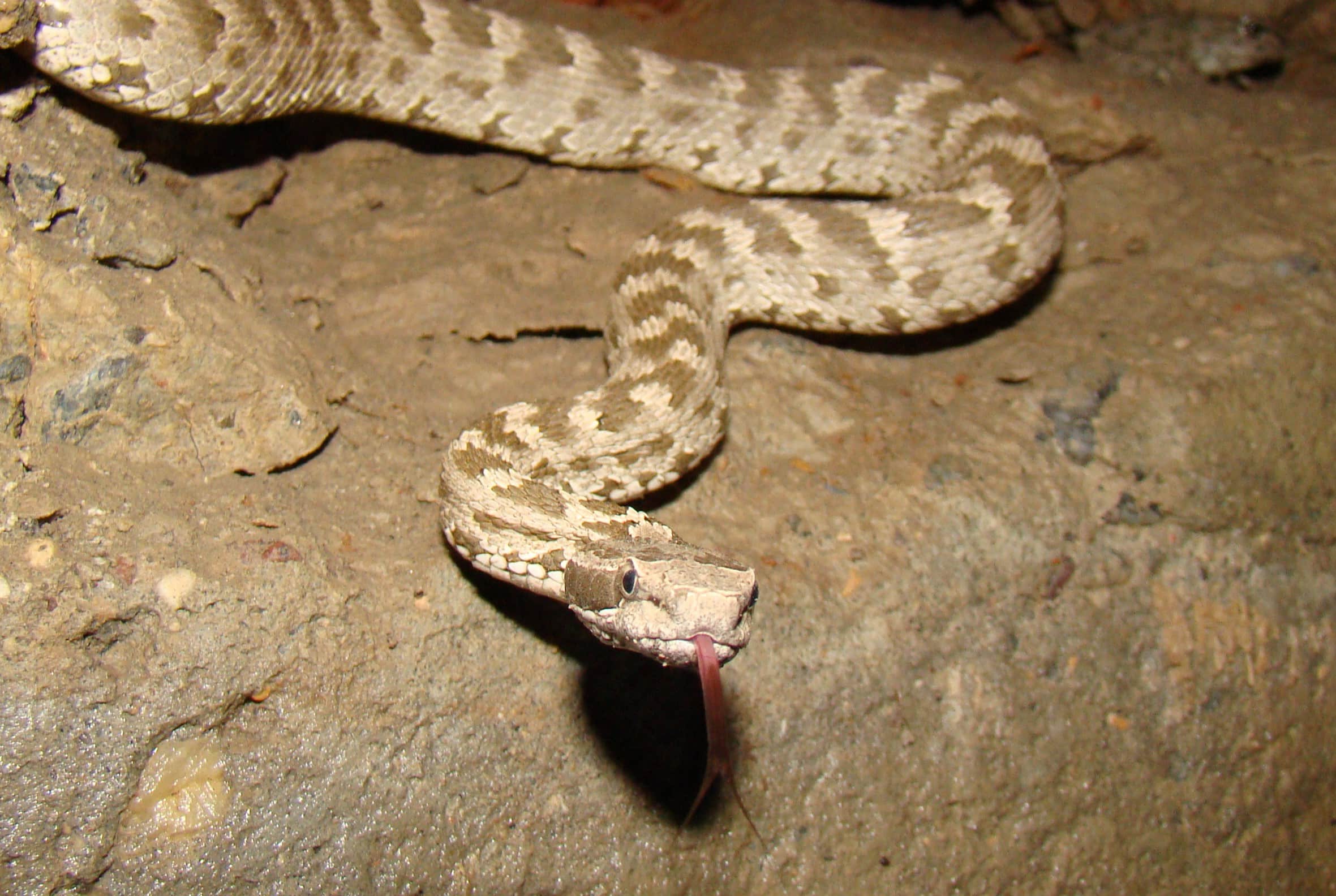
Are you ready to be amazed by the incredible world of the Siberian Pit Viper? These fascinating creatures are renowned for their stunning beauty and deadly venom. In this article, we will delve into 14 unbelievable facts about the Siberian Pit Viper that will leave you in awe of their unique characteristics and remarkable adaptations.From their striking appearance to their hunting techniques, we will explore the mesmerizing aspects of these venomous snakes. Learn about their habitat, distribution, and threat level, as well as their intriguing behavior and reproductive habits. Prepare to embark on a thrilling journey of discovery as we uncover the hidden secrets of the Siberian Pit Viper.So, get ready to have your mind blown and join us as we unveil the astounding world of the Siberian Pit Viper and its astonishing attributes.
Key Takeaways:
- The Siberian Pit Viper is a venomous snake with unique heat-sensing pits, found in cold forests of Asia. Its venom has potential medical uses, but it’s important to protect this valuable species.
- This viper preys on small mammals and hibernates in winter. Its beautiful coloration and role in regulating the ecosystem make it an important part of the Siberian forest.
The Siberian Pit Viper is a venomous snake species.
The Siberian Pit Viper, also known by its scientific name Gloydius halys, is a highly venomous snake found primarily in northeastern Asia. Its venom is known for its potent hemotoxic and neurotoxic effects.
It has unique heat-sensing pits on its head.
One of the fascinating features of the Siberian Pit Viper is the presence of specialized heat-sensing pits located between its nostrils and eyes. These pits allow the snake to detect warm-blooded prey, even in complete darkness.
The Siberian Pit Viper has a distinctive triangular-shaped head.
This viper species is characterized by its distinctive triangular-shaped head, which is broader and distinct from its slender neck. This morphology helps in the identification of the Siberian Pit Viper.
It is primarily found in the forests of Siberia and other parts of Asia.
The Siberian Pit Viper is native to the forests of Siberia, as well as other regions of northeastern Asia, including China, North Korea, and Mongolia. It thrives in a cold climate and is well adapted to its habitat.
The Siberian Pit Viper has a venomous bite.
The venom of the Siberian Pit Viper is a potent cocktail of toxins that can cause various symptoms in its prey or potential threats. Its bite can lead to tissue damage, severe pain, swelling, and in some cases, even paralysis.
It preys on small mammals, birds, and other reptiles.
The Siberian Pit Viper is an ambush predator that primarily feeds on small mammals, such as rodents, birds, and other reptiles. It strikes quickly and uses its venom to immobilize its prey before swallowing it whole.
Female Siberian Pit Vipers give birth to live young.
Unlike some snake species that lay eggs, female Siberian Pit Vipers give birth to live young. They can give birth to a litter of 4 to 15 offspring, depending on factors such as age and environmental conditions.
The venom of the Siberian Pit Viper has potential medical applications.
Despite its dangerous nature, the venom of the Siberian Pit Viper contains compounds that have shown promise in medicinal research. Some of the toxins found in the venom have been studied for their potential use in developing medications for conditions such as hypertension and blood clotting disorders.
It has a rattling tail, similar to other pit vipers.
When threatened or provoked, the Siberian Pit Viper can produce a rattling sound by vibrating its tail. This behavior serves as a warning to potential predators or intruders, indicating its dangerous capabilities.
The Siberian Pit Viper has adaptations for cold weather.
Living in the harsh climate of Siberia, the Siberian Pit Viper has adapted to survive in cold temperatures. It has specialized scales that help to insulate its body and retain heat, allowing it to remain active even in chilly conditions.
It is considered a valuable species in traditional medicine.
In some parts of Asia, the venom and other body parts of the Siberian Pit Viper are highly valued in traditional medicine practices. However, it is important to note that overexploitation of these snakes can have a negative impact on their populations.
The Siberian Pit Viper is known for its beautiful coloration.
With shades of brown, beige, and gray, the Siberian Pit Viper displays a stunning camouflage that allows it to blend perfectly with its surroundings. This cryptic coloration helps it to remain hidden from both prey and predators.
The Siberian Pit Viper is known to hibernate during winter.
As a cold-adapted species, the Siberian Pit Viper goes into a state of hibernation during the winter months to conserve energy and survive the harsh conditions. It seeks refuge in underground burrows or crevices until the weather becomes more favorable.
The Siberian Pit Viper is an important part of its ecosystem.
As a predator, the Siberian Pit Viper plays a crucial role in regulating the population of small mammals and maintaining the balance of its ecosystem. Its presence in the food chain helps to control potential pest species and ensure the overall health of its habitat.
Conclusion
In conclusion, the Siberian Pit Viper is a fascinating and enigmatic creature. With its unique characteristics and deadly venom, it serves as a reminder of the diversity and complexity of the animal kingdom. From its cold-blooded nature to its striking appearance, this viper has captured the curiosity of researchers and enthusiasts alike. Whether you are studying reptiles or simply interested in learning about the world’s most incredible creatures, the Siberian Pit Viper is definitely one that shouldn’t be overlooked.
FAQs
Q: Are Siberian Pit Vipers dangerous?
A: Yes, Siberian Pit Vipers are highly venomous and should be approached with caution. Their venom can cause severe symptoms and even be fatal if not treated promptly.
Q: What is the average size of a Siberian Pit Viper?
A: Siberian Pit Vipers can vary in size, but on average, they grow to about 2 to 3 feet in length.
Q: Where do Siberian Pit Vipers inhabit?
A: Siberian Pit Vipers are found in the forests and mountainous regions of Siberia, as well as parts of China and Mongolia.
Q: What do Siberian Pit Vipers eat?
A: Siberian Pit Vipers are carnivorous and primarily feed on small rodents, birds, and other reptiles.
Q: How do Siberian Pit Vipers defend themselves?
A: Siberian Pit Vipers have several ways to defend themselves. They rely on their venomous bite, camouflage, and defensive postures when feeling threatened.
Q: Can Siberian Pit Vipers be kept as pets?
A: It is not recommended to keep Siberian Pit Vipers as pets due to their highly venomous nature and specific habitat requirements.
Q: Are Siberian Pit Vipers endangered?
A: The conservation status of Siberian Pit Vipers is not currently assessed, but they may face threats such as habitat loss and illegal pet trade.
Q: How long do Siberian Pit Vipers live?
A: Siberian Pit Vipers have an average lifespan of approximately 15 to 20 years in the wild.
Uncover more fascinating facts about the incredible world of reptiles, from the most venomous snakes to the captivating field of herpetology. Delve into the unique characteristics and behaviors of these amazing creatures, and expand your knowledge with our collection of informative articles. Whether you're a reptile enthusiast or simply curious about these intriguing animals, there's always more to learn and discover in the realm of reptilian wonders.
Was this page helpful?
Our commitment to delivering trustworthy and engaging content is at the heart of what we do. Each fact on our site is contributed by real users like you, bringing a wealth of diverse insights and information. To ensure the highest standards of accuracy and reliability, our dedicated editors meticulously review each submission. This process guarantees that the facts we share are not only fascinating but also credible. Trust in our commitment to quality and authenticity as you explore and learn with us.


